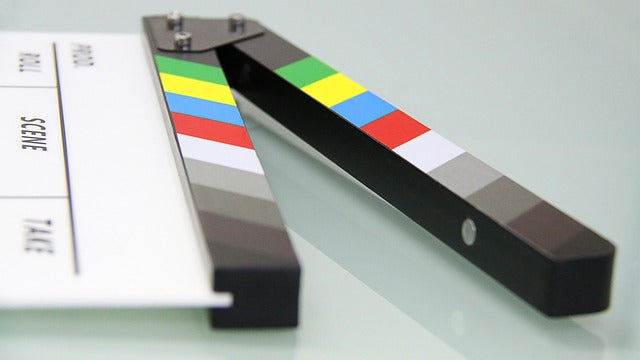Costume design is the meticulous process of choosing costumes, outfits and accessories for characters in productions. Most films, theater shows, TV shows and other forms of visual media feature characters. Costume designers work side by side with directors, producers and actors to design costumes that bring characters to life. Without them, the films and shows wouldn't be the same. There's an art to costume design and its creative process, however, that goes unnoticed by the public.
Why Costume Design Is an Art
When most people think of art, they envision paintings and drawings. But art encompasses other forms of human creativity, including costume design.
Whether it's for a film, theater show, TV show or other forms of visual media, costume design is an art. Art is a wide-reaching branch of creative activity. Any process that allows a person to express his or her creativity can be classified as art -- and costume design is no exception.
Professional costume designers are essentially artists. Their canvases are actors and actresses. The tools with which they create their art is a collection of costumes, outfits and accessories. Like all artists, costume designers express their creativity; they choose, as well as design, costumes for actors and actresses, thereby bringing the characters to life.
From Jeans and T-Shits to Suits and More
Costume design may include casual clothes like jeans and t-shirts, or it may include formalwear like modern and vintage suits. Ultimately, the clothes worn by the actors and actresses will depend on the specific type of movie or show in which they are featured.
Some movies and shows may call for casual clothes, whereas others may call for formalwear. The costume designer's job is to choose the right costumes, outfits and accessories for all actors and actresses in the respective movie or show.
Costume Design Begins With the Script
The creative process of costume design will almost always begin with a script. To create a costume, a costume designer will often start by reading the script for the movie or show. Scripts are documents that outline the setting, dialogue, plot and directions for a movie or show. They serve as the blueprint for producing a movie or show.
To choose the right costumes, outfits and accessories for a movie or show, costume designers must familiarize themselves with the script. They will read the script while also working closely with the director to better understand his or her vision.
Costume Design Requires Research
Costume designers will typically research other elements of the movie or show as well. After reading the script, for instance, they may research the time period. Different movies and shows take place in different time periods. Some of them are modern and take place in the current day, whereas others take place in the past.
For movies and shows that take place in the past, costume designers must choose vintage costumes, outfits and accessories that are relevant to that time period. Doing so will ensure historical and cultural accuracy, resulting in a higher level of production value.
Regardless, costume designers typically perform extensive research. They must not only read the script, but also research elements of the movie or show to choose the right costumes, outfits and accessories for all of the characters.

Costume Sketches
Another part of the creative process of costume design is sketching. Once they have a sense of the characters' costume needs, costume designers will begin to sketch designs. These sketches represent the costumes, outfits and accessories that the characters will wear.
Costume designers will collaborate with directors, producers and other members of the production team when sketching designs. Members of the production team may have their own input, which costume designers must listen to. Lighting designers, for instance, may require certain clothes of a certain color. If there's little or no lighting in a particular scene, dark-colored clothes may be difficult to see.
The Renderings
The final part of the creative process of costume design involves renderings. Renderings are essentially sketches that have been finalized. In the prior step, costume designers will sketch basic designs that represent the costumes, outfits and accessories that the characters will. After signing off with all other members of the production team, costume designers will work on the renderings. Renderings are more detailed, finished versions of these sketches.
Most renders involve paint. Costume designers may create them using watercolor paints or acrylic paints. With paint, costume designers can inject color into their designs. They can show the type of costumes that the characters will wear, and they can show the color or colors of those costumes.
What About the Production Process?
The creative process of costume design includes several parts, such as reading the script, researching elements of the script, sketching designs and creating renderings. But this is just the creative process of costume design. There's also the production process.
The production process, as the name suggests, involves producing the costumes, outfits and accessories. Costume designers may have to produce them manually. Using raw fabric and a sewing machine -- along with patterns -- they can produce new garments from scratch.
Costume designers may place their garments on a mannequin when producing them. A process known as draping, it allows them to perfect the measurements. Costume designers can make alterations to a garment while it's placed on a mannequin, thus allowing for the perfect shape and size.
Rather than producing them from scratch, though, many costume designers order their costumes, outfits and accessories. Movies and shows have budgets. Their budgets include all production-related expenses, such as the costumes. Costume designers can order garments and accessories for the movie's or show's characters.
In Conclusion
There's a creative process behind all forms of art. Creativity, in fact, is a defining characteristic of art. Costume design requires creativity, so it's considered a form of art as well. As revealed here, the creative process of costume design includes four primary parts: reading the script, researching elements of the script, sketching designs and creating renderings.


